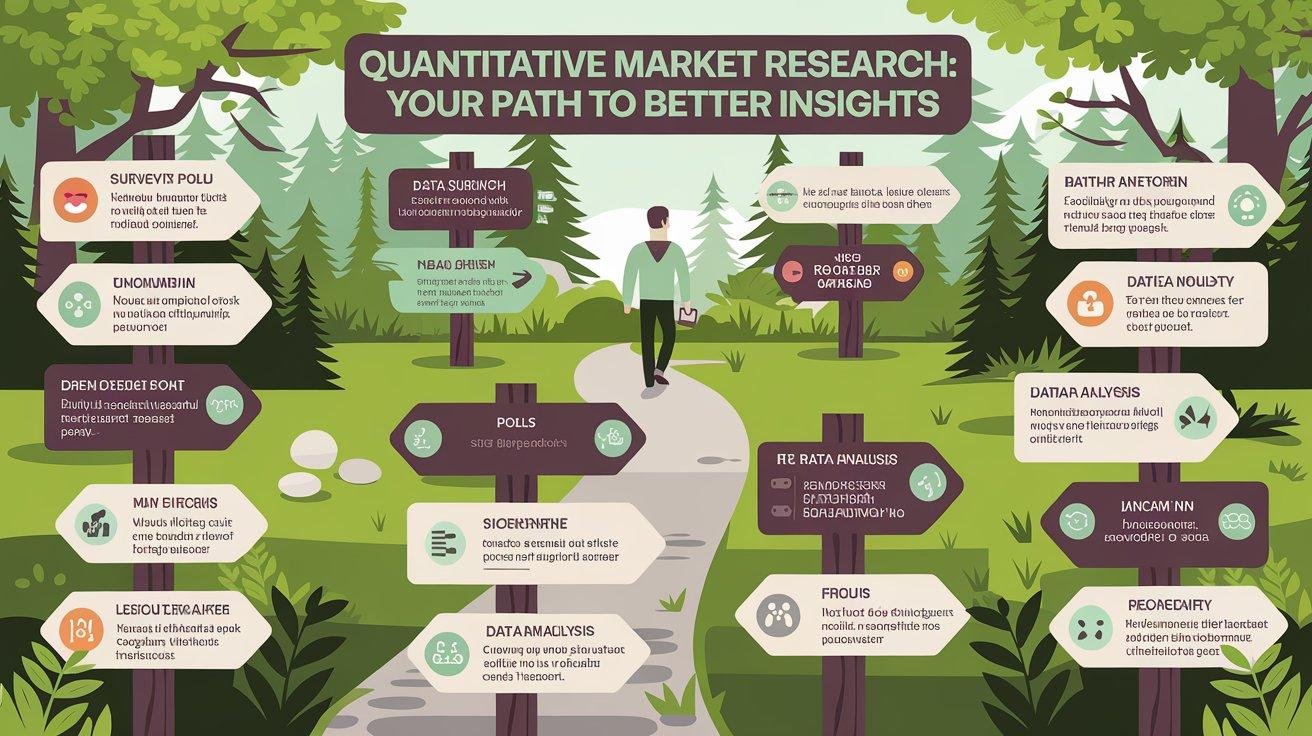In today’s business world, reliable data is crucial for making decisions. Quantitative market research gathers data, transforming it into actionable insights. Whether you’re a startup or an established brand, understanding your customers and market trends is key. This article explores how quantitative research delivers better insights, helping you build effective strategies for success.
What is Quantitative Market Research?
Quantitative research focuses on collecting numerical data to study customer behavior and trends. Unlike qualitative research, which seeks to understand emotions, quantitative research relies on structured methods like surveys, polls, and questionnaires. By gathering large volumes of data, it provides a broad view of market conditions. This allows businesses to make informed, data-driven decisions. The power of quantitative research lies in its ability to measure and track trends over time, making it essential for growth.
Why Quantitative Research Matters in Business
Quantitative research helps businesses in several key ways. Identifying customer preferences is one major benefit. Understanding what drives customer decisions aids product development, pricing, and marketing strategies. Tracking market trends is another. It allows businesses to monitor changes in demand and behavior, adapting their strategies to stay relevant. Data-driven decisions: Numbers offer solid proof for strategies, reducing risk. Measuring performance is also easier. Businesses can compare their performance to industry standards, revealing areas needing improvement.
How Quantitative Market Research Works
Quantitative research typically uses standardized methods to collect data. The goal is to gather information from a large sample representing your target market. Let’s explore some of the most common tools: Surveys: Online or phone surveys are popular methods for quickly gathering large amounts of data. Questionnaires: Structured forms are used to collect focused information on specific topics. These provide detailed insights into specific aspects of consumer behavior. Polls: Quick, one-question polls offer a snapshot of customer opinions. They’re fast and give immediate feedback. Analytics: Tools like Google Analytics track metrics like website visits, helping businesses understand user behavior.
The Benefits of Quantitative Market Research
Quantitative research offers numerous advantages. Objective data: It provides objective insights because numbers don’t lie. There’s little room for bias in the interpretation. Scalability: You can gather data from a large audience, making it scalable. This is vital when you want to represent the whole market. Precision: Numbers provide specific, actionable insights. You can measure satisfaction, product success, or market share with accuracy. Tracking trends: Quantitative data allows businesses to monitor trends over time. For example, analyzing feedback over several years reveals shifting customer preferences, helping you adjust your offerings.
Challenges in Quantitative Research
Quantitative research has its challenges too. Data accuracy: The quality of the findings depends on how the data is collected. Poor survey design or biased samples can lead to flawed insights, which harm decision-making. Limited depth: Quantitative data tells you what is happening but not why. It offers breadth, but lacks the depth you might find in qualitative research. Costs: Large-scale surveys or studies can be expensive, especially for smaller businesses. Conducting comprehensive research takes time and resources.
Ensuring Success in Quantitative Research
For successful quantitative market research, follow these key steps: Clear goals: Define your research objectives before starting. Whether you want to understand customer satisfaction or measure market demand, these goals shape your research design. Well-constructed surveys: Crafting clear, unbiased questions is crucial. Keep the survey short to maintain participant engagement and get reliable responses. Proper sampling: The accuracy of your results relies on your sample size. Ensure your sample represents the target market to avoid skewed findings. Effective analysis: Use statistical tools like Excel or SPSS to analyze your data properly. Interpretation is key to turning raw numbers into insights.
Whether through surveys, polls, or analytics, quantitative research is essential for businesses looking to thrive in today’s market. By mastering this approach, you can turn raw data into valuable insights that lead to business success.
Real-World Examples of Quantitative Market Research
Many successful companies have used quantitative research to improve their strategies. Amazon: The e-commerce giant uses surveys and analytics to monitor customer satisfaction and product performance. This helps them stay ahead of the competition by continuously improving their offerings. Netflix: By analyzing viewer behavior, Netflix knows exactly what shows to recommend, ensuring users keep watching. Quantitative data enables them to tailor content and engage customers more effectively.
Conclusion
Quantitative market research provides businesses with a solid foundation of data to inform strategic decisions. By focusing on objective, measurable insights, companies can track trends, understand customer preferences, and make smarter decisions. Whether through surveys, polls, or analytics, quantitative research is essential for businesses looking to thrive in today’s market. By mastering this approach, you can turn raw data into valuable insights that lead to business success.



